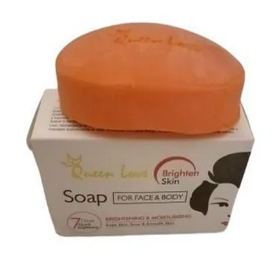
Kojic Acid Soap: Unveiling the Brightening Benefits
Kojic acid soap is a skincare product gaining popularity for its skin-brightening properties and ability to address various skin concerns. Derived from fungi, particularly Aspergillus oryzae, and initially used in the food industry, kojic acid has found its way into the realm of skincare due to its skin-lightening effects. Let’s delve into the details of Kojic Acid Soap, exploring its origin, composition, benefits, potential side effects, and tips on usage.
Origin and Composition:
Kojic acid is a byproduct of the fermentation process of malting rice for the production of sake, a traditional Japanese rice wine. In skincare, it is valued for its tyrosinase-inhibiting properties. Tyrosinase is an enzyme involved in melanin production, and by inhibiting its activity, kojic acid helps lighten skin tone and reduce hyperpigmentation.
Kojic acid is often combined with other ingredients such as glycerin, coconut oil, or shea butter to create Kojic Acid Soap. These additional components enhance moisturization and provide a well-rounded skincare experience.
Benefits of Kojic Acid Soap:
a. Skin Brightening:
The primary benefit of Kojic Acid Soap is its ability to lighten and brighten the skin. It can be particularly effective in addressing issues like dark spots, age spots, and hyperpigmentation caused by factors such as sun exposure, acne, or hormonal changes.
b. Even Skin Tone:
Regular use of Kojic Acid Soap may contribute to achieving a more even skin tone by reducing the appearance of uneven pigmentation.
c. Hyperpigmentation Treatment:
Kojic acid is known for its potential in treating melasma, freckles, and other forms of hyperpigmentation. It inhibits the production of melanin, the pigment responsible for skin coloration.
d. Anti-Aging Properties:
Some users report that Kojic Acid Soap can contribute to a youthful appearance by reducing the appearance of fine lines and wrinkles. Its exfoliating properties may help renew the skin’s surface.
e. Acne Scars and Blemishes:
Kojic acid may aid in fading acne scars and blemishes, contributing to a clearer complexion over time.
Potential Side Effects:
While Kojic Acid Soap can be beneficial for many, it’s essential to be aware of potential side effects:
a. Skin Sensitivity:
Kojic acid may cause skin irritation, redness, or itching, especially in individuals with sensitive skin. Performing a patch test before regular use is recommended.
b. Increased Sun Sensitivity:
Kojic acid can make the skin more sensitive to sunlight. Users are advised to use sunscreen regularly to protect their skin from harmful UV rays.
Tips for Usage:
a. Patch Test:
Before incorporating Kojic Acid Soap into your routine, perform a patch test to check for any adverse reactions.
b. Gradual Introduction:
Start using the soap gradually to allow your skin to adjust. Using it daily from the beginning may lead to irritation.
c. Sunscreen Application:
Given its potential to increase sun sensitivity, it’s crucial to apply sunscreen with adequate sun protection factor (SPF) during the day.
d. Moisturize:
Kojic Acid Soap can be drying, so using a moisturizer after washing can help maintain skin hydration.
Conclusion:
Kojic Acid Soap presents an appealing option for individuals seeking to address hyperpigmentation, achieve a brighter complexion, and promote an even skin tone. While its effectiveness is widely acknowledged, it’s vital to be mindful of potential side effects and incorporate it into a skincare routine with caution.
As with any skincare product, individual experiences may vary, and consulting with a dermatologist or skincare professional is advisable, especially for those with specific skin concerns or conditions. With proper usage and attention to your skin’s response, Kojic Acid Soap can be a valuable addition to your skincare arsenal, promoting a radiant and more uniform complexion.


